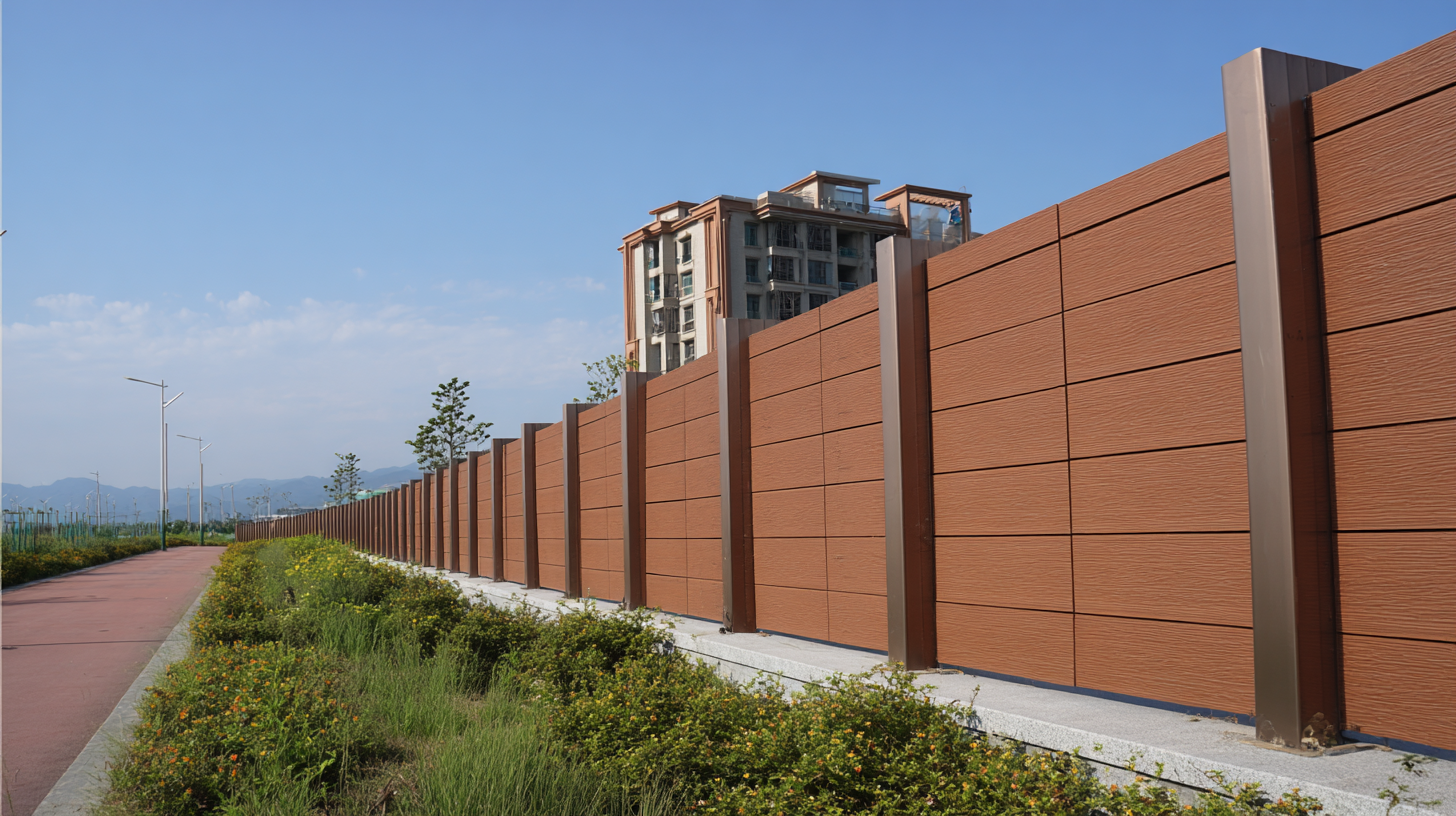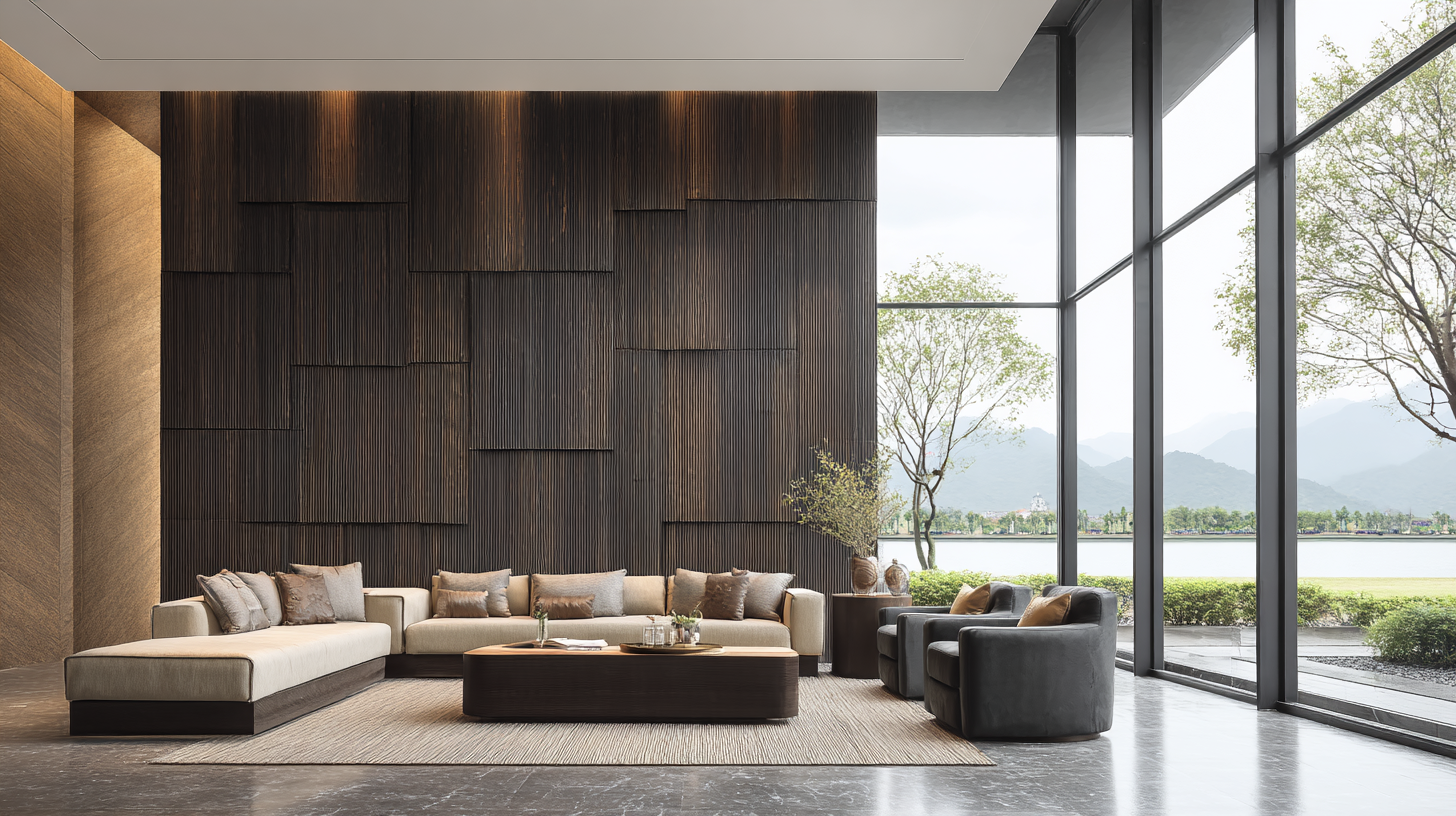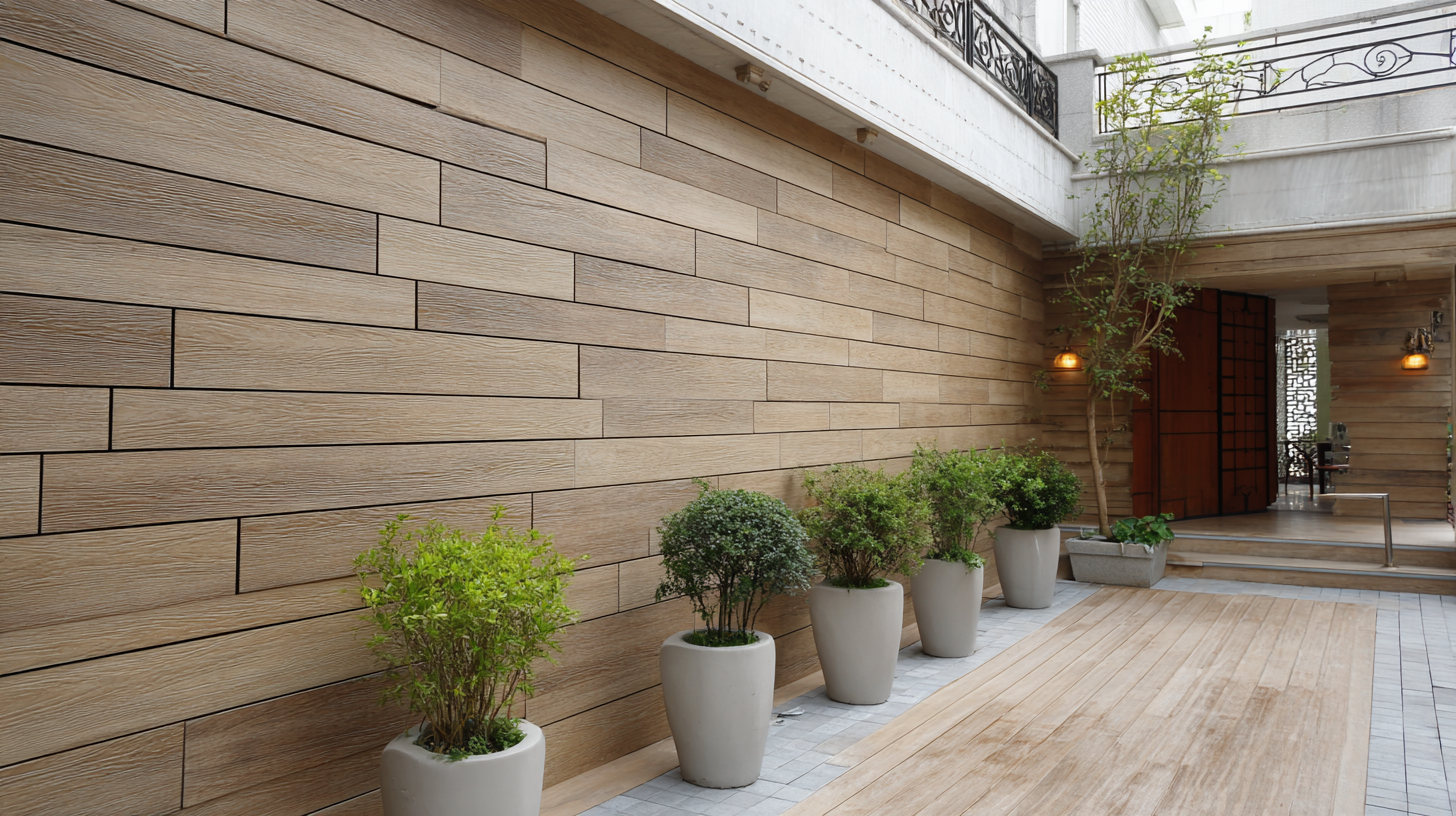Leave Your Message
As we approach 2025, the construction industry is witnessing a significant transformation, particularly in the realm of WPC (Wood Plastic Composite) wall cladding. According to a report by Research and Markets, the WPC market is expected to grow at a CAGR of 12.6% from 2020 to 2025, driven by a surge in demand for environmentally friendly building materials. WPC wall cladding not only provides an aesthetic appeal but also enhances durability and resistance to weather conditions, making it an increasingly popular choice among builders and homeowners alike. This blog will explore the future trends in WPC wall cladding technology for 2025 and delve into the benefits of various types, empowering readers to make informed decisions when selecting the right option for their projects.

The emergence of Wood Plastic Composite (WPC) wall cladding has transformed the architectural landscape, offering a perfect blend of aesthetics, sustainability, and durability. As we look toward 2025, we can expect exciting innovations that will further elevate WPC’s appeal. Designers and manufacturers are increasingly focusing on eco-friendly production methods, utilizing recycled materials to create cladding that not only looks stunning but also minimizes environmental impact. Furthermore, advancements in technology will enable the development of even more resilient materials, resistant to common issues such as warping, fading, and pests.
In addition to enhanced performance, the design possibilities offered by WPC wall cladding are expanding. By 2025, we anticipate a surge in customizable options, allowing consumers to choose colors, textures, and finishes that suit their unique preferences and architectural styles. Smart technology integration is also on the horizon, with WPC materials potentially incorporating features like temperature regulation and self-cleaning properties. As the market continues to evolve, homeowners and builders alike will need to stay informed about these innovations to make the best choices for their projects, ensuring they select WPC wall cladding that aligns with both functionality and design aspirations.
As we look ahead to 2025, the focus on sustainability in construction materials is becoming increasingly vital. Wall cladding, which serves both aesthetic and functional purposes, is evolving to meet the demand for eco-friendly solutions. WPC (Wood Plastic Composite) wall cladding stands out as a sustainable option, combining the durability of plastic with the warmth of wood. This innovative material minimizes waste and promotes the use of recycled content, appealing to environmentally conscious builders and homeowners alike.
In selecting the right wall cladding, it is essential to consider not only the visual impact but also the material's environmental footprint. Opting for sustainable materials like WPC can significantly reduce the carbon footprint of a building project. When evaluating options, look for certifications and performance metrics that highlight a product's ecological benefits. By prioritizing sustainability, we can create healthier living spaces while contributing to the preservation of our planet for future generations. The future of wall cladding is not just about beauty; it’s about making responsible choices that echo our commitment to environmental stewardship.
As we look ahead to 2025, the design trends shaping WPC (Wood Plastic Composite) wall cladding will be heavily influenced by evolving aesthetic preferences. Homeowners and builders are increasingly seeking materials that not only offer durability but also enhance visual appeal. The rising demand for aesthetically pleasing interiors is driving the development of WPC options that mirror natural wood finishes, featuring textures and colors that cater to contemporary design sensibilities. This trend emphasizes a seamless blend between functionality and beauty, making WPC a preferred choice for both indoor and outdoor applications.

In an era where competition among specialty retailers intensifies, understanding these aesthetic trends becomes vital. Retailers must adapt their offerings to align with consumer desires for stylish yet practical materials. The impact of urbanization on lifestyle choices further adds to the urgency, as urban dwellers look for innovative ways to beautify their spaces. With a focus on secured settings and well-maintained environments now essential in real estate, the demand for appealing WPC wall cladding options is anticipated to rise significantly. Retailers who can balance aesthetic innovation with cost-effective solutions will likely carve out a competitive niche in this evolving market.
When selecting WPC (Wood Plastic Composite) wall cladding in 2025, homeowners and builders should weigh several key factors to make the best choice for their projects. Durability is paramount; WPC materials must resist weathering, moisture, and pests while providing long-term stability. Reviewing the fire retardant properties of the cladding is also crucial, especially in light of recent reports highlighting the catastrophic consequences of using unsafe materials in construction. A strong emphasis on fire safety can prevent tragedies similar to the one highlighted in the Grenfell report.
Another important consideration is the aesthetic versatility of the WPC cladding. As trends evolve, opting for a product that offers a variety of finishes and colors can enhance the visual appeal of a structure while aligning with contemporary design preferences. Additionally, environmental impact should not be overlooked; choosing sustainably sourced WPC can support greener building practices. Understanding local regulations and the long-term value of the cladding—both in terms of maintenance and property enhancement—are essential to ensure that the investment pays off. With these factors in mind, one can navigate the diverse options in the WPC cladding market effectively as we approach 2025.
As the demand for sustainable building materials rises, the construction industry is witnessing a shift towards Wood Plastic Composite (WPC) wall cladding. Compared to traditional materials like wood and vinyl, WPC offers a compelling blend of durability, aesthetic appeal, and environmental responsibility. A study by the Global WPC Market Research has projected that the WPC market is expected to grow at a CAGR of 11.4% from 2020 to 2025, indicating a robust trend favoring composite materials.

When performing a comparative analysis between WPC and traditional wall cladding materials, several factors come into play. WPC is impervious to rot and insect damage, addressing common drawbacks associated with wood. Furthermore, it requires significantly less maintenance over time, minimizing long-term costs for property owners. In addition, WPC is often produced from recycled materials, aligning with the increasing preference for eco-friendly options. According to industry experts, over 70% of building professionals are prioritizing sustainability in their material selection, making WPC an attractive choice for modern construction projects.
Moreover, the aesthetic versatility of WPC allows for various design possibilities, with an extensive range of colors and textures available to mimic natural wood finishes. As architects and builders aim to create innovative and sustainable structures, WPC wall cladding is well-positioned to lead the charge in redefining residential and commercial facades.

